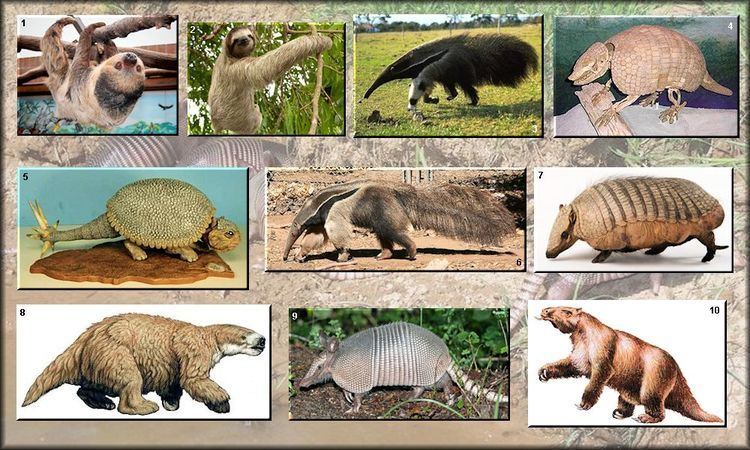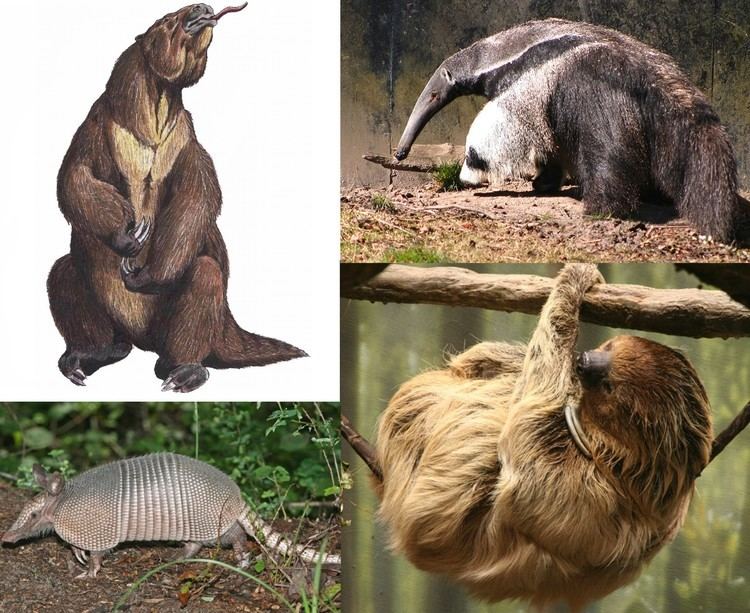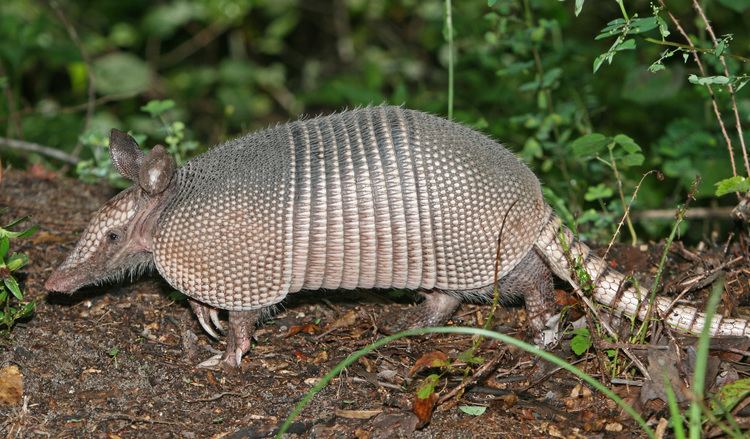Higher classification Eutheria Rank Superorder | Scientific name Xenarthra | |
 | ||
Lower classifications Armadillo, Sloth, Anteater, Cingulata | ||
The superorder Xenarthra is a group of placental mammals, extant today only in the Americas and represented by anteaters, tree sloths, and armadillos. The origins of the order can be traced as far back as the Paleocene, as early as 59 million years ago in South America. Xenarthrans developed and diversified extensively in South America during its long period of isolation in the early to mid Cenozoic Era. They had invaded the Antilles by the early Miocene and, starting about 9 Mya, spread to Central and North America as part of the Great American Interchange. Nearly all of the formerly abundant megafaunal xenarthrans, such as ground sloths, glyptodonts, and pampatheres, became extinct at the end of the Pleistocene.
Contents

Xenarthrans share several characteristics not present in other placental mammals. The name Xenarthra, which means "strange joints", was chosen because their vertebral joints have extra articulations unlike other mammals. This trait is referred to as "xenarthry". Also, unlike other mammals, the ischium and sacrum are fused. The males have internal testicles, which are located between the bladder and the rectum. Furthermore, xenarthrans have the lowest metabolic rates among the therians.

Evolutionary relationships

Xenarthrans were previously classified alongside the pangolins and aardvarks in the order Edentata (meaning toothless, because the members do not have front incisor teeth and lack, or have poorly developed, molars). Subsequently, Edentata was found to be a polyphyletic grouping whose New World and Old World taxa are unrelated, and it was split up to reflect their true phylogeny. Aardvarks and pangolins are now placed in individual orders, and the new order Xenarthra was erected to group the remaining families (which are all related). The name Xenarthra means "strange joints", and was chosen because their vertebral joints have extra articulations and are unlike those of any other mammals. The morphology of xenarthrans generally suggests that the anteaters and sloths are more closely related to each other than either is to the armadillos; this is upheld by molecular studies. Since its conception, Xenarthra has increasingly come to be considered to be of a higher rank than 'order'; some authorities consider it to be a cohort, while others consider it to be a superorder. Whatever the rank, Xenarthra is now generally considered to be divided into two orders: Cingulata, which contains the armadillos; and Pilosa, which contains the Vermilingua (anteaters) and Folivora (sloths; previously known as Tardigrada or Phyllophaga).

Xenarthra may be most closely related to either Afrotheria (in the group Atlantogenata), Boreoeutheria (in the group Exafroplacentalia), or Epitheria (comprising Afrotheria and Boreoeutheria). In other words, it may be nested within Eutheria or it may be the basal extant group. A comprehensive phylogeny by Goloboff et al. includes xenarthrans as a sister clade of Euarchontoglires within Boreoeutheria (Laurasiatheria+Euarchontoglires).
Phylogeny
Below is a recent simplified phylogeny of the xenarthran families based on Slater et al. (2016) and Delsuc et al. (2016). The dagger symbol, "†", denotes extinct groups.
Classification
XENARTHRA
